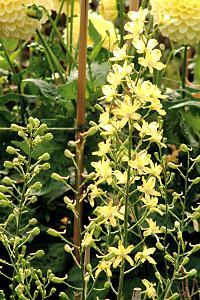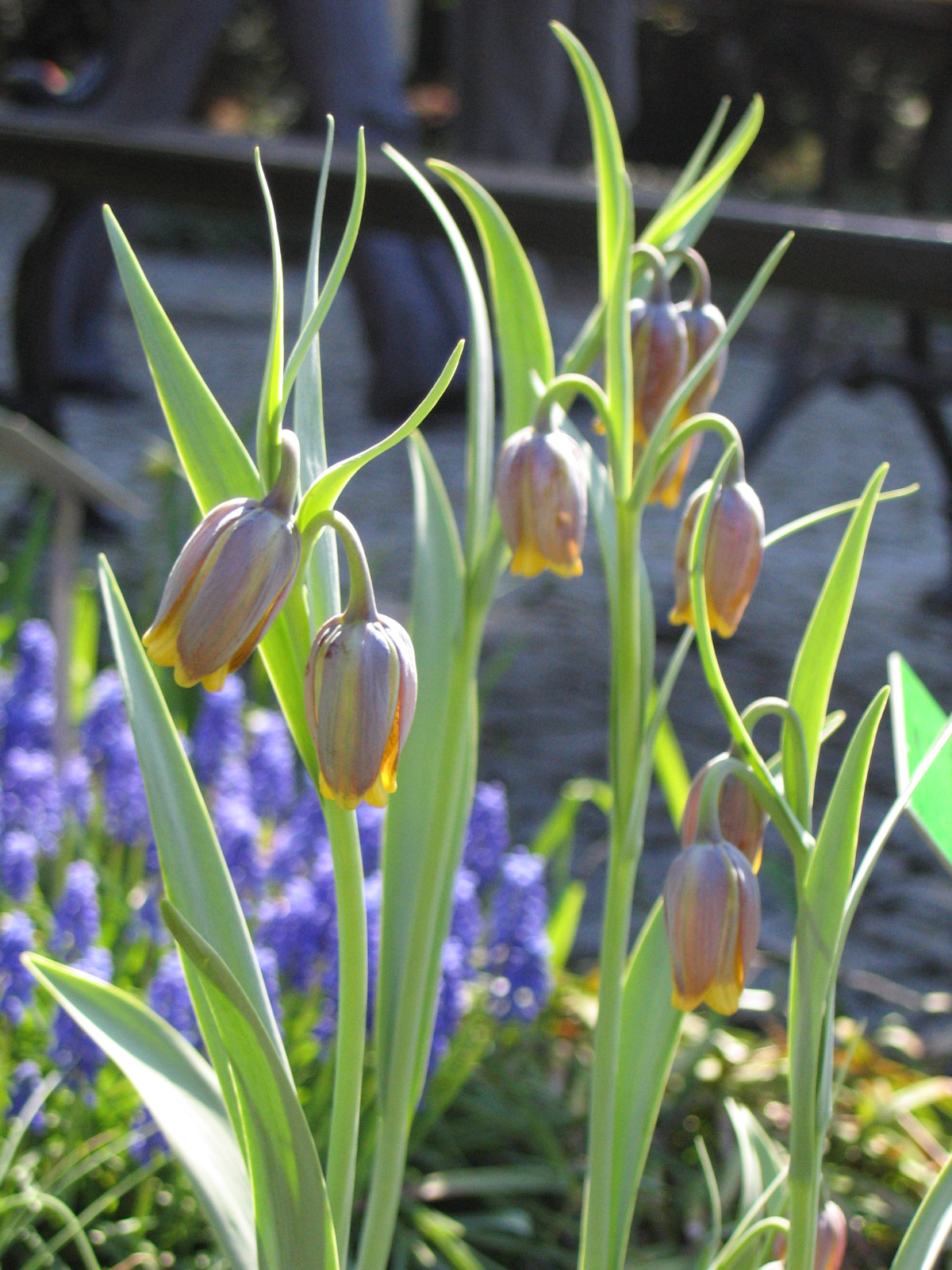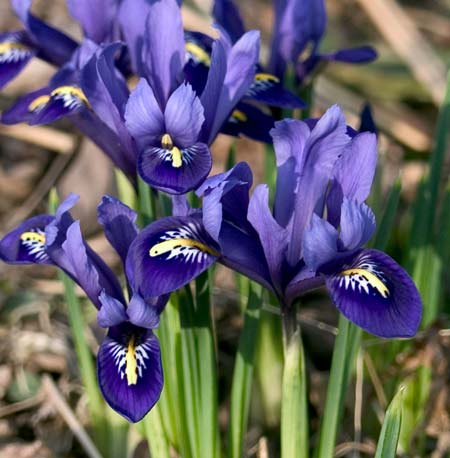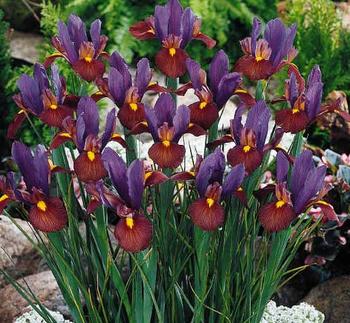The roof garden dream is over: but I've taken redundancy and I'm starting a plant nursery!
Sunday 26 September 2010
In the hands of nature
I have no idea what has happened to the leading on this type but my knowledge of HTML is insufficient to fix it, you'll just have to stick with me!
Hostgator Rebate
Friday 24 September 2010
From basket case to off my trolley
So, I hobbled off to a garden centre in Camden Town yesterday, ostensibly to by some more seed trays and pots, but was soon seduced by a fine range of plants and had to abandon my little basket for a trolley. Into it went a Cyclamen hederifolium, not the nicest looking specimen but the one with the most action still to come, plenty of buds and leaf shoots trying to burst the pot open.
Next came one of my all-time faves, Gentiana sino-ornata, again one with a ton of flower buds and really healthy growth. My eye was also drawn to a yellow single Dahlia with deep, deep purple foliage called "Clarion".

I also needed a short window box to plant up the Lathyrus chloranthus as part of my plan to screen the crappy greenhouse and picked up a rickety expandable trellis to screw to it, job done. Then inside for propagation trays, pots (biodegradable plastic!) and clay for the many bulbs calling to me from the next room.
Ended up with the stunning Iris "Katherine Hodgkin", a fairly recent crossing between the soft yellow winogradowii and histroides major, which has finally bulked up enough in nurseries around the world to bring the price down to an affordable £2.49 for 8 bulbs; Iris danfordiae (which will bloom happily in spring and then suddenly disappear. Apparently they tend to break up into tiny rice size bulblets and are often never seen again. At least in a pot I'll be able to investigate in the autumn; Hermodactylis tuberosus, a weird Iris-like green and black thing I've never had success with before; Iris "Bronze beauty", a Dutch iris that is almost brown; and Crocus speciosus which was already sprouting so should be up in and flowering in no time.
I also picked up three bulbs of Lilium "Night Flyer", a deep purple/Brown Asian hybrid which looks intriguing although it's not the sort of thing you'd put in a wedding bouquet!
So I'm now out of clay pots, again, in fact I've nothing for the lilies cos it needs to be quite bottom-heavy as it's a metre or so high. Or will be, if the squirrels don't get to them first.
Everything is as ready as it can be for my holiday, I just have to pray for rain (sorry) and little wind, It's all covered or weighed down or sitting in a bath of water. Hey, they're only plants and if they die, it's an excuse to replace them!


| My photo doesn't do the yellow justice, it's much more vivid but I've wiped Photoshop from my computer for reasons to dull and technical to go into |
| Gentiana sino-ornata (or litlerally, "Chinese ornamental". Again I've chosen a specimen packed with flower buds (that's what all the stripey thing sticking up © Chris Mackay |

I also needed a short window box to plant up the Lathyrus chloranthus as part of my plan to screen the crappy greenhouse and picked up a rickety expandable trellis to screw to it, job done. Then inside for propagation trays, pots (biodegradable plastic!) and clay for the many bulbs calling to me from the next room.
Ended up with the stunning Iris "Katherine Hodgkin", a fairly recent crossing between the soft yellow winogradowii and histroides major, which has finally bulked up enough in nurseries around the world to bring the price down to an affordable £2.49 for 8 bulbs; Iris danfordiae (which will bloom happily in spring and then suddenly disappear. Apparently they tend to break up into tiny rice size bulblets and are often never seen again. At least in a pot I'll be able to investigate in the autumn; Hermodactylis tuberosus, a weird Iris-like green and black thing I've never had success with before; Iris "Bronze beauty", a Dutch iris that is almost brown; and Crocus speciosus which was already sprouting so should be up in and flowering in no time.
I also picked up three bulbs of Lilium "Night Flyer", a deep purple/Brown Asian hybrid which looks intriguing although it's not the sort of thing you'd put in a wedding bouquet!
So I'm now out of clay pots, again, in fact I've nothing for the lilies cos it needs to be quite bottom-heavy as it's a metre or so high. Or will be, if the squirrels don't get to them first.
Everything is as ready as it can be for my holiday, I just have to pray for rain (sorry) and little wind, It's all covered or weighed down or sitting in a bath of water. Hey, they're only plants and if they die, it's an excuse to replace them!


Thursday 23 September 2010
Rosemary and time
For some reason I had been under the impression that Rosemary propagation was difficult, involving those dreaded heeled cuttings with a bit of old wood on the end. I stand before you now contrite and corrected. It is in fact a piece of piss if you take softwood cuttings in the usual manner. When giving the bush an autumn haircut I decided I might as well give it a go, not having any lamb in the fridge, vegetarians are like that, and have had a 100% success rate, that's even better than pelargoniums! The rest I hung up to dry before sealing in an air-tight jar for the next time I'm called upon to do my famous roast potatoes.
The Clematis, having been in their huge pot for about a month now are looking fantastically healthy, which is as much a testament to the professionalism of Thorncroft Clematis. They're a wee bit on the pricey side (£10-15 each) but the mature plants come in special deep, narrow pots with a good couple of feet of luxuriant growth and beautifully packed to avoid any damage. The gravel is to keep the soil cool and the pot was painted silver then painted in strawberry yoghurt in an unsuccessful attempt to give it and aged look.
 |
| My clematis tower. That pot's more than 30cm wide, to give you an indication of scale |
| Clematis "Jacqueline du pre" |
They've really romped away, especially the deep velvet red "Niobe", although much of this growth will be in vain as I need to prune everything back to about two feet to encourage branching, although I won't touch Jacqueline until she's flowered as it flowers on new growth. You could get yourself into a right pickle with your pruning but when growing in a container the main thing to remember is you're aiming to get the stems to branch, so check whether your variety flowers on new or old wood and either take a deep breath and cut each stem right back to about a foot, just above a node) or wait for it to flower and do exactly the same. You may even be treated to a second flush of colour later in the season.
 |
| Clematis "Niobe" |


While we're on the subject of climbers, I think I'm going to use some of the Lathyrus chlorathus to screen that horrible plastic mini greenhouse (I saw a neighbour eyeing it with contempt the other day) so I'll probably do that with a short window box and chicken wire. The plants are a couple of inches high now so it will soon be time to pinch out the main growing shoot to encourage side shoots for greater coverage with fewer plants. It's such an eyecatcher I'd like to give a few away to show off and I've only got eight.
 |
| "Acid yellow" is how Chilterns describes these and I think it an apt decription |
Otherwise its just a case of counting the seedlings as they come through, up to a about 10 llilies, at least 100 (really) Verbascums (pricking them out's going to be fun, I tried to sow them thinly but you know what it's like with tiny brown seeds and brown compost and no matter how careful you are with the watering can, turning the rose upside down and starting the flow away from the seed tray, the seeds always get washed into one corner!).
| Iris "Eye of the Tiger". Get back in the ground! It's too early! |
Well, as I can't think of anything else worth writing (was any of it?) here are some pictures of what's left as we pass the autumnal equinox.
| An unidentified Gerbera which has stunned all summer long with its tropical leaves and endless flowers |
 |
| the variegated trainling Fuchsia "Sunray" |
 |
| Is outshone by Thalia, but most things are |
| A Dahlia missing its label but which has really performed this summer |
| A humble Tropaeolum majus hybrid, really attracted all manner of bees and other insects |
 |
| One last blast of Delphinium |
| Pelargonium "Lord Bute" (I think, feel free to contradict me) |
| Old fashioned Pinks. The smell is heavenly |
| And looking ahead: a winter pansy |
PS, I've just arrived back from a nursery in Camden Town. By Taxi. More on that tomorrow...
Tuesday 21 September 2010
Green shoots and recovery
So many thrills from the morning inspection that I'd go and lie down if I didn't have an appointment at the fracture clinic at 10. I've fractured a metatarsal in my foot and I didn't even get to have a three-in-a-bed romp or launch my own scent (that won't make any sense to anyone who isn't British or an avid football (soccer) fan). Makes clambering out the window to check on my babies a bit tricky but it's ok as long as I remember to land on the right (ie left) foot.
A single shoot has poked its head above the vermiculite in the Iris sibirica hybrids pot, there's similar action going on with Delphinium zalil, a rare yellow species from Afghanistan, and I've now got seven seedlings in the mixed Lily hybrids pot. I have more Verbascum phoenicum mixed hybrids than I can possibly accommodate so get your orders in now! I'm promised spikes ranging from the deepest purple through shades of pink to white with pink eyes.
 |
| Delphinium zalil, more of a curiosity than a stunner, and presumably a gift to the hybridizers! |
I'm also faced with how to make sure any of this is alive when I get back from holiday. I've sat the candelabra primulas in shallowish dishes of water so they will be constantly sodden but this should be okay because I had them seeding themselves in the mud between rocks right at the poolside at my childhood garden in Scotland. The other seed trays have been placed on capillary matting where available and covered with clear plastic lids (weighed down, natch). Hopefully the condensation and humidity will be enough to keep them moist but not encourage pathogens cos I'm rubbish on them and they're the questions I always get at work. Someone will bring in a leaf with a brown bit on it and ask what's wrong. If it's a houseplant I always blame the central heating, if it's outside I find the wind a useful partner in bluffery. Fact is, it's always some rust or something and the best thing you can do is spray it with something you wouldn't want to drink.
Pots yet to germinate have been watered, covered in clingfilm (top tip, put something under one side of the pot so it's sitting at an angle or you get a build up of water on the film when it rains which causes it to dip in the middle and squish any emerging gems, a bit like on the awning outside a brasserie, which the French waiter will leave until an English looking couple walk past, at which point he'll decide to poke the awning with a stick, further drenching Doris and Derek.
Can't decide whether to use the primula trick with Canna indica, which certainly wouldn't mind the soaking but a sudden cold snap and I'll return to a pot of slimy, dead mush. So I think I'll just give it a really good soak (the compost has a ridiculously high proportion of those moisture retaining granules that turn into blobs of jelly on contact with water) and zip it safely in the "greenhouse". Everything else is going to have to take its chances: the arilbreds and junos are under cover, the Frits are right up against the wall where the rain barely figures, and the other bulbs would normally be in the open ground anyway. In fact, the Dutch/English/Spanish (xiphium basically) hybrid "Eye of the Tiger", which are in a wide bowl oversown with Antirrhinum "Peaches and Cream" (already germinating by the hundred) is beginning to poke through already, about four months early.
 |
| Peaches and Cream ©Thompson and Morgan, from whom I bought the seed, so hopefully they won't mind me using their photo |
Monday 20 September 2010
Considering the lilies

Custom Search
| Lily seedlings. I feel a bit like that bloke on the news yesterday who'd discovered Tigers living above the treeline in Bhutan! |
Oh blimey, yippee, unmitigated excitement as a casual glace at the open-air pot containing seeds of "Lily World" mixed hybrids revealed three shepherd's crook shaped cotyledons (sorry, seed leaves) all apparently deciding to go for it within 12 hours of each other cos I'm sure they weren't there last night. So much for "These seeds may germinate irregularly over a long period but exposure to cold (5C) should be effective. We would suggest sowing at about 18C for 6-8 weeks before transferring to cold for a similar period." I was relying on nature to do this, having already usurped as much of the fridge as I dared for Paeonia Mlokosowichii (or something like that, you know, the beautiful single-flowered yellow one). Of course there were a lot more than three seeds in the packet so Chilterns sage advice may yet prove to be spot on.
Inspired I also sowed Meconopsis betonicifolia "Hensol Violet" (not really sure why I didn't just plump for the true species (although I now have a living, transpiring specimen of that from my chums at Slack Top Nursery) or x sheldonii). Although the Chiltern Seeds catalogue is so well written with passion, wit and knowledge I often take it to bed with me and their entry for Hensol Violet is quite seductive: "Coming largely true from seed is this much admired form with purple-violet flowers. Perhaps rather surprisingly, these blend in well when grown with the type species which make the blue of the latter even bluer!"
 |
| Oh yeah! I see what they mean. ©Wild Ginger Farm nursery, who look well worth checking out for future purchases |
Also sowed M. regia and once again I hope Chilterns won't mind me plagiarising (Heaven knows, they've made enough money out me!): "If this superb plant from Nepal never flowered it would still be well worthy of cultivation in any garden for the beautiful and magnificent rosettes, up to 3ft across, of leaves densely covered with silvery or golden, silken hair. However, the branching stems of yellow flowers, up to 5ins across, are also worthy of the description "royal" 3-5ft".
I've grown it before in north-east Scotland though it's fair to say the climate there, while only a few metres above sea-level, is more akin to its natural habitat than a pot on a sometimes baking, always windy, London rooftop. Most of this branch of the Meconopsis dynasty with the rosettes (napaulensis, grandis etc), are monocarpic, ie, they die after flowering but they take a few years to bloom so if you sow every year you have flowers every year.
Which reminds me, I've ordered a Cardiocrinum giganteum from Glendoick in Perthshire, due to arrive early next month. For those unfamiliar with the genus, it is a truly stunning, gigantic lily-like plant which spends a few years charging its batteries before thrusting a huge spike, hanging with enormous lily flowers, very much like L. longiflorum or formosanum but on a different scale altogether, 12 feet into the air. How on earth am I going to keep that shaded and out of the wind? The ones at Glendoick grow in their stunning woodland garden, in medium shade and surrounded by Rhododendrons (everything at Glendoick is surrounded by Rhododendrons). I think they leave offsets but don't quote me on that. In fact, I have to show you a picture of it.
 |
| If there was a person in the picture they would come about half-way up ©UBC Botanical Garden |
On a more mundane note, the Verbasucum phoenicum hybrids are racing each other to produce true leaves, as is Digitalis ferruginea var. gigantea but I'm going to leave them until I get back from my holiday before pricking out as I think I was a bit over-eager with the Dianthus. They're fine but are a bit dwarfed by their 2in pots and there is a bizarre phenomenon were you can transplant a young plant into too big a pot and kill it, which sounds wrong but apparently it's the result of too much moisture and too few roots to absorb it.
I'm also experimenting with a Chamaedorea elegans (that's parlour palm to you and me) that got too floppy for the house and was replaced by the more upright Howea kentia. There was nothing fundamentally wrong with the former so I manoeuvered it out the window and it while the older leaves have browned in the wind it began to produce a load of very green and healthy shoots from the crown so I've snuggled it up with bubble wrap and left it to face the elements of the British winter. As long as I keep it dry I'm quite optimistic. I think the greatest threat is the wind blowing it into the school playground and killing a small child and the drier it is the more top heavy it is so I might lay it on its side to avoid any accidental infanticide.
 |
| Howea kentia, altogether more upright than its predecessor which used to tickle you as you watched the TV |
What else? Oh yes, there are definitely candelabra Primula seedlings coming through although I think the first one was a rogue, it looks far too healthy to be one of mine, but there are a few more now. The problem with buying a packet of mixed species of the same genus is they are more than likely going to come up at different times and you have no way of knowing what's what until they flower, so pricking out becomes something of a minefield as you may well be upsetting viable seed of a later germinating species when pricking out the early ones. But it's a nice problem to have!
Fiddling on the roof

Custom Search
So, I got my little polythene greenhouse thing from Argos which was surprisingly easy to assemble considering it had no instructions. It had also promised in the description an apron that could be pegged into the ground to stop it blowing away. There was no apron, in fact the polythene cover doesn't even quite reach the ground so, even if my roof was made of turf, pegging would be out of the question. But I'll save my grumbling for when it a) blows away, or b) everything in it dies.
It's not exactly roomy so once the choicer Pelargoniums, Penstemons, Fuchsias, a Canna indica and a few of the more recently rooted cuttings were tucked in, closing it was a bit like tackling a particularly overfull suitcase (yes, it zips up!)
| Note the large Gerbera (a real revelation this year) to screen it from the neighbours |
But there's a bit more room to move about up there now so I was able to check the bearded Irises over carefully, removing any brown or potentially slimy bits as they settle in for a wet winter. Wish I'd put more grit in the compost when I potted them up but they arrived bare-root from Spain by a courier who had the usual problem finding my flat (GPS?) and I was just anxious to get them potted up and feasting in the hope that at least some will reward me (and you, dear reader) with a flower or two in April/May. And if we're really lucky my arilbred hybrids (including stolons of an unnamed seedling) and junos will do something very spectacular indeed, if I get my watering regime right. Trial and error is all very well but they're not cheap and a year is a long time in gardening.
| Couldn't resist showing off my new Tricyrtis hybrid |
Accidentally knocked a branch off Salvia patens when I was doing my Krytpon Factor bit so took the opportunity to take even more cuttings as it's such a stunning selection, the blue flowers making even the best Meconopsis betonicifolia or grandis look a bit washed out.
And looked up my new purchases on the web to give you a sneak preview (I don't hold the copyright for the images so if the owners object I will of course remove them). Or better still, why not buy some plants from them!
 |
| Azalea japonica "Blauwe Donau" |
| Azalea japonica "Olga Niblet" |
| Rhododendron "Baden Baden" |
 |
| Fritillaria uva-vulpis |
 |
| Iris reticulata (typical, slightly dull, form) |
STOP PRESS: Oh crikey! I've just been piddling around looking at Frits on the web and accidentally ordered £40 worth from a really nice sounding nursery in Essex called Rose Cottage Plants (well, the order did include an Oncocyclus Iris and an intriguing little reticulata called "Halkis" with light blue petals marked maroon at the end. At least they don't take up much room... As I've name-checked them, I hope they don't mind me showing you "Halkis"...
 |
| Stunner, eh? |
Subscribe to:
Posts (Atom)





